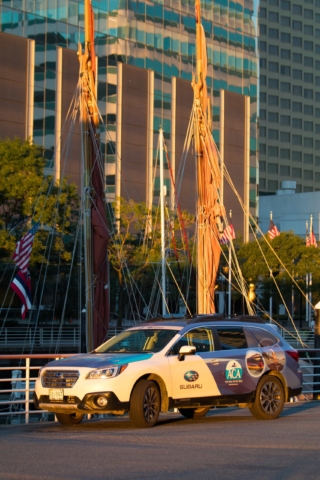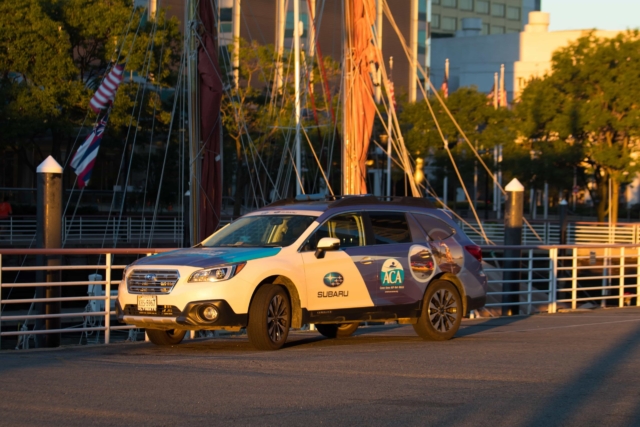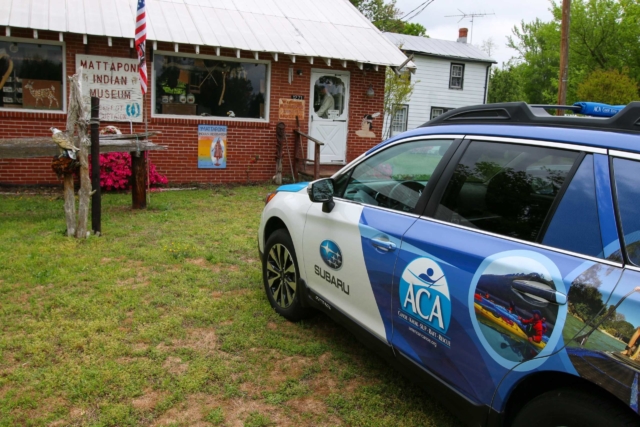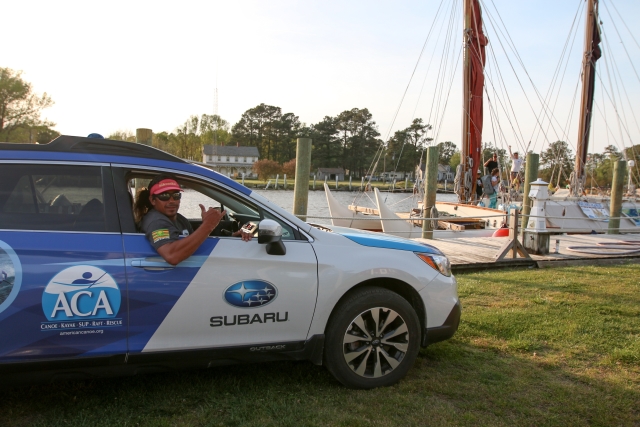The Land Waʻa
- Posted on 21 Nov 2016
- In Newsletter, Updates
As anyone familiar with the first 40 years of Hōkūleʻa and PVS history knows, we’re a deep-sea operation with almost all of our sailing having been in deep and coastal waters of the Pacific Ocean before this voyage. For the last 8 months, our Worldwide Voyage has been on a totally different kind of journey – intracoastal waterways, arrival ceremonies large and small, hugging the eastern coast of North America. The East Coast engagement has challenged PVS because of the volume of people who want to see the canoe, hear about where we have been, and learn about what we have seen. In a word — humbling.
Since touching North America at Key West in March, Hōkūleʻa and her crews have travelled thousands of miles to places like Tangier Island; Washington, D.C.; New York; Maine; Nova Scotia; and the canal and lock systems that link the Great Lakes, the Saint Lawrence River, and the Hudson. The journey has been remarkable, fueled not just by the hundreds of thousands of views and comments on social media, but by the thousands upon thousands of people who personally traveled far and wide to touch the canoe and meet the crew.
This voyage is staffed by just a handful of people, so daily interaction and this level of coordination would be impossible but for the army of volunteers and partners that are equally passionate and have put real effort into making the Worldwide Voyage work. There are so many we want to thank, but today as I think about Hōkūleʻa’s eminent departure from Virginia, I want to spend a bit of time on one organization that has really embodied the spirit and level of interaction necessary to turn an idea like this voyage into something that really has a global reach.
The American Canoe Association (www.americancanoe.org) is a national organization that supports large- and small-scale outdoor watercraft activities, and helped to host Hōkūleʻa and her crews while on the East Coast. Admittedly, Hōkūleʻa is the largest canoe that the folks at the ACA have ever laid their eyes on, but she is still a canoe, and these guys are really passionate about all kinds of watercraft. They were all-in to help from day one, providing PVS with a paid intern for the start of the WWV, collaborating with us about fundraising, and – once we hit the North American continent – everything from finding berths for the canoe and places for crew to stay, or helping with public engagements, to raising and lowering the masts to clear under bridges, the folks at the ACA have been instrumental in our success in our 8 months here on the East Coast.
Perhaps the biggest contribution – at least from my perspective as someone who finds myself in the midst of anything that might need doing from logistics, to communications, to documentation – is the 2015 Subaru Outback loaned to us by the ACA. When Hōkūleʻa arrived to North America in March, a land waʻa crew went to Virginia to pick up the Subaru and drive to meet the canoe near Cape Canaveral. Since that time, the ACA Subaru has been one of the most important tools that we have had. The Subaru has allowed us to drive inland for hundreds of miles to share the story of the canoe with excited kids who couldn’t make it to where Hōkūleʻa was docked. We have used the Subaru to follow Hōkūleʻa’s coastal route, leap-frogging ahead to the next marina where Hōkūleʻa was intended to berth to provide invaluable service by inspecting the dock, talking to the dock master for local knowledge, determining the best approach for the vessels, and using a VHF handheld radio to describe the real-time currents and wind conditions to the captains so that they can anticipate the specific tidal effects, surges, nearby ferry schedules, etc. The Subaru helped us to move crew and gear to the next port, to keep the canoe stocked with the necessary provisions and supplies, to run errands and to participate in events away from the canoe. As Hōkūleʻa has traveled thousands of miles up and down the coast, the Subaru land waʻa has mirrored that voyage, caring for and supporting all of the efforts of the voyage.
Basically, we would not have had the success that we have had – moving the canoe from port to port, meeting with thousands of new friends that are now family to us – without the unending support and energy of Kirk Havens, Wade Blackwood and the ACA. The love and aloha the ACA ʻohana has shown us was actually forged in a happy coincidence about 20 years ago, when ACA flew a bunch of their crew to Hawaiʻi to paddle in the Molokaʻi Hoe for the first time. While it can get pretty rocky in the Potomac where they usually paddle OC-6, the Kaʻiwi channel gets a bit more gnarly than the great river. The ACA crew was advised that they needed to pick up a steersman with some significant ocean time to help them navigate across the Kaʻiwi Channel. They didn’t know how lucky they were to get a friend of a friend to ask and convince pwo Nainoa Thompson to steer for them. Nainoa wasn’t going to race that year and hadn’t made the commitment to steer anyone else, so he agreed to be their steersman for the 41-mile open-ocean crossing. What place they came in is not important, but by the end of that day, lifelong friendships were born. When Wade and Kirk heard in 2012 that we were coming with our very large canoe to the East Coast as part of the Worldwide Voyage, they immediately committed to supporting the effort.
We are almost wrapped up with these East Coast legs – 8 months, thousands of miles on the odometer, about a dozen states and two countries later – and therefore our time with the ACA Subaru. While it really does seem like a blur at times and there is never enough time for us to get to know everyone well enough or engage each community with the depth we would like, we do know that none of this would have been possible without the tireless efforts of the American Canoe Association and the people who have embraced us as family.
To ACA, Kirk Havens, Wade Blackwood, and the Havens ʻOhana, mahalo for all that you have done to help us make this voyage a success.
Hōkūleʻa’s Dry Dock Fundraiser
Every year since embarking on the Worldwide Voyage in 2014, Hōkūleʻa has taken several weeks of downtime annually to ensure she is safe, seaworthy and beautiful for the thousands of nautical miles that lay ahead.
Please help fund Hōkūleʻa’s 2016 dry dock efforts.





